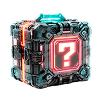Tria — is a next-generation blockchain platform designed to unite Web3 ecosystems into a single environment without complex bridges, network switching, or multiple wallets. The project combines the functionality of a neobank and chain abstraction infrastructure, allowing users to store, spend, and trade cryptocurrencies in one place. Tria removes traditional barriers to decentralization, offering the simplicity of classic fintech apps while fully preserving self-custody and privacy principles.
- Tria and its mission: why it is called a “Web3 neobank”
- Architecture and technologies of Tria
- Functions and user experience
- Integrations and ecosystem of the project
- Use cases and development challenges

Tria and its mission: why it is called a “Web3 neobank”
Tria emerged as a response to the fragmentation of the blockchain space. Today, users must manage dozens of wallets, hold gas tokens for each network, and manually perform bridging between them. Tria’s goal is to build an infrastructure that abstracts these complexities, offering unified access to assets across all blockchains.
The project positions itself as a Web3 neobank because it merges familiar banking functions — transfers, payments, and asset management — with the benefits of decentralization. Tria enables asset storage without intermediaries, and its interface resembles a classic banking application while maintaining deep blockchain integration.
The core philosophy of Tria is to provide users with freedom to interact with digital assets without technical barriers. Using chain abstraction principles, the platform makes cross-network transfers and the use of any token as simple as a regular transaction in a banking app.
Architecture and technologies of Tria
The technical structure of Tria is based on three key modules: BestPath AVS, Unchained Layer 2, and CoreSDK. Each module is responsible for a specific layer of interaction between the user, the network, and liquidity.
| Component | Purpose |
|---|---|
| BestPath AVS | A marketplace for executing user transactions and intents where routers determine the most optimal path. |
| Unchained L2 | A layer providing wallet state management, enhanced security, and distributed signatures. |
| CoreSDK | A developer toolkit for integrating wallets and cross-chain operations into dApps without coding for each individual network. |
Tria’s architecture hides blockchain complexity, turning user actions into simple commands. For example, token transfers between networks happen automatically without bridges, and all liquidity operations are executed in the background.
This approach forms a solid foundation for building on Tria not only consumer apps but also enterprise solutions operating across multiple virtual machines — EVM, SolanaVM, MoveVM, and others.
Functions and user experience
Tria unites three main areas: asset storage, trading, and spending. The user gets a single interface where everything — balance, exchange, and purchases — is available within one application.
Main platform features include:
- secure asset storage without intermediaries or seed phrases;
- instant cross-chain transfers without bridges;
- crypto payments for goods and services just like with a regular card;
- a unified balance for all assets with automatic liquidity source selection;
- yield management on stable tokens without withdrawing funds from the platform.
This approach makes Tria a true “bank without a bank”: the user doesn’t rely on centralized intermediaries yet enjoys the convenience and speed of traditional finance.
Integrations and ecosystem of the project
Tria actively develops its ecosystem by bringing together users, developers, and partners. The concept is built on compatibility with various virtual machines, making the platform truly universal.
Supported directions include Ethereum-compatible networks (EVM), Solana, Move-based blockchains, and Cosmos IBC solutions. This enables cross-chain interaction and liquidity without manual bridges.
The project provides SDK tools for developers to create Web3 applications with multi-chain capabilities. For users, Tria acts as a self-custodial neobank, where they can store, transfer, and spend funds without intermediaries.
Financing and development are supported by venture funds and strategic industry partners, confirming the seriousness of Tria’s long-term vision and strategy.
Use cases and development challenges
Tria opens the door for users to manage cryptocurrencies easily and efficiently. Through this platform, they can pay for goods and services with crypto, transfer assets between networks without bridges, and use tokens without worrying about gas in each chain. All of this is delivered through a unified interface that combines a familiar banking experience with the benefits of self-custody.
For developers, Tria serves as a foundation for creating multi-chain applications and integrating cross-network functionality with minimal effort. This makes the project a universal infrastructure for both users and Web3 ecosystems.
The main challenges lie in scaling the architecture and maintaining competitiveness in the chain abstraction sector. Balancing the security of self-custody with ease of use is also crucial. Nonetheless, Tria already shows the potential to become a bridge between traditional finance and the decentralized economy, offering intuitive and secure asset management.





